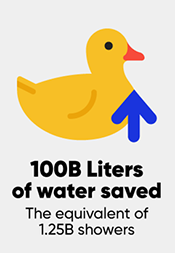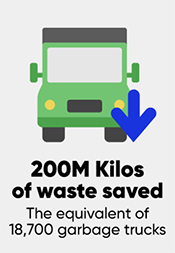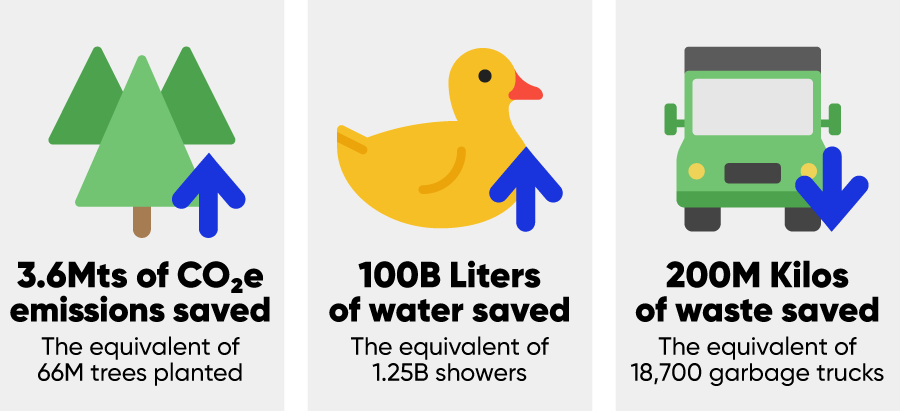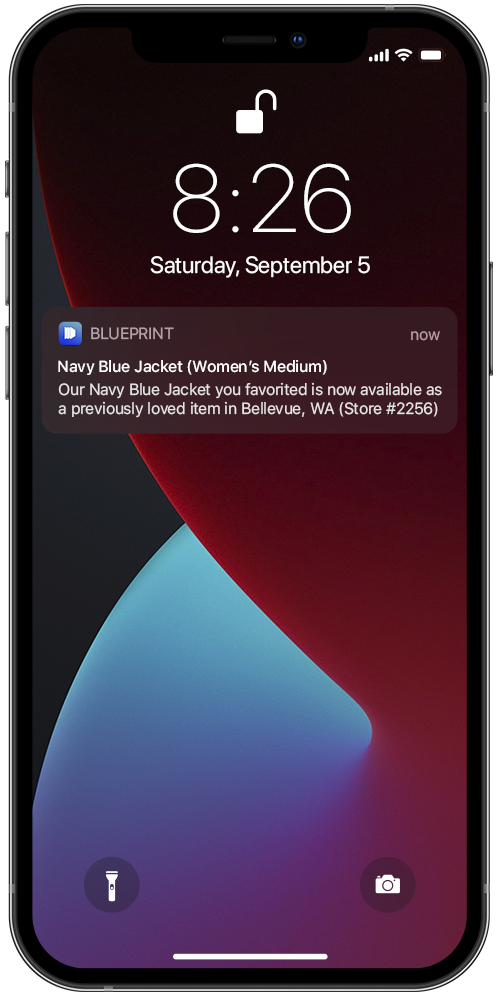Since the realities of common retail practices, like burning unsold products, have become widely understood to consumers, many have become more selective about who they do business with. It’s not just destroying unsold inventory to maintain prestige, however. With 3.5 billion pounds of returned goods ending up in U.S. landfills annually, shoppers are increasingly on the hunt for companies that prioritize sustainability.
To do their part for the planet and entice these sustainability-minded shoppers, companies must find ways to continue to grow revenue while shrinking their environmental footprint. The answer is the circular economy.
The circular economy is focused on extending the life cycle of retail products – increasing the active use of an item of clothing by just three months can lead to a 5 to 10 percent reduction in its carbon, water and waste footprints. Successful retailers are establishing resale platforms, creating rental opportunities, designing products with circularity in mind and avoiding unnecessary returns – because hauling around returned inventory in the U.S. produces more than 15 million metric tons of carbon dioxide emissions annually.
Secondhand retailer ThredUP estimates if everyone in the U.S. had bought one item used instead of new in 2020, it would have saved:




The key to a circular economy lies in the troves of unused data most retailers already have. Data is a company’s single most valuable asset. No matter the industry or size of the company, data should be foundational to every business decision. Establishing a circular inventory management system anchored in a modern, virtualized data estate enhances visibility and operationalizes a company’s data, which opens the door to more revenue streams for inventory and personalized customer journeys, ultimately reducing the impact on the planet and setting companies apart from their competitors.
Take control of your inventory
Establishing a circular inventory management system allows retailers to obtain data the second items enter the circular inventory ecosphere. This data can inform buying decisions and expand vendor relationships.
Take, for example, a customer who receives a jacket as a gift, but it’s too small. That person then returns the jacket in-store. Through the enhanced visibility enabled by a data-driven circular inventory management system, when an employee processes that return, anyone interested in knowing that item is coming back into inventory (e.g., procurement, marketing and used resell teams) can see it on their dashboards or be alerted automatically.
With these dashboards, for example, the sales team can see the return rate of this jacket as well as how many of those same jackets customers then purchased off the used platform. With that margin and erosion data, the buyer can approach the vendor next season with more leverage. Taking it one step further, when the buyer sees that the jacket performs better on the used platform than the standard site, that opens the door to talk strategy with the vendor. Buying the vendor’s “scratched/dented supply,” for example, could keep sales going through the company’s used platform while keeping the vendor’s imperfect goods out of landfills.
To further reduce the impact on the planet, the company can work to establish a relationship with that vendor to ship direct to customers rather than shipping from one warehouse to another then to the customer.
Armed with a full suite of timely, actionable data, companies can improve their margins and impact on the planet.
Enable personalized customer journeys
In the retail industry, returns have become a business of their own. Many companies don’t want to deal with true circular inventory because they assume it costs more than it’s worth to get items back on the shelf, which leads to returned products landing in landfills. But companies focused on their environmental footprint, and responding to customer demands to be more sustainable, are trying to combat this phenomenon via the circular economy.
The data created by having a circular inventory management system can create new sales opportunities and new customers. Let’s return to that customer who returned the too-small, gifted jacket. With a data-enabled circular inventory system, the employee who processed the return could receive a notification to let the customer know there are similar items in their size on the used gear site. This gives the company another avenue to keep the customer with the company while also decreasing the environmental impact by extending the life of those used jackets.
With the data created, collected and managed in a circular inventory management system, a company knows who its avid buyers are, who buys new, who buys used, who buys jackets regularly and what size they wear. This enables the creation of customer profiles that marketers can use to match returned items to buyers quickly. Maybe a customer bought a used jacket in the summer when the price was right for them. Come winter, the company can market a used beanie, boots or maybe even skis that would put that jacket to good use.
Additionally, when a customer buys something new – say a backpack – after camping season, the marketing team can start communicating to that customer options for reselling the item back to the company if they’re done with it, keeping that backpack out of the landfill. With that, the team can also present used options if the customer is ready to try something different, keeping the customer in the company’s circular ecosphere.

Data-enabled customer profiles also open a whole new marketing opportunity in the form of presales. By immediately knowing when a customer returns something, the marketing team can target buyers whose profile indicates they’d be interested in that item. Done correctly, this process minimizes the time returned inventory spends in a warehouse, which requires a significant amount of energy consumption to light, heat and cool.
Blueprint understands the frustrating, bifurcated experience created when data is siloed, forcing marketing and sales teams to work off old data and their hunches. Let’s have a conversation about how we can operationalize your data to increase revenue and customer loyalty while decreasing the negative impact on the environment.

